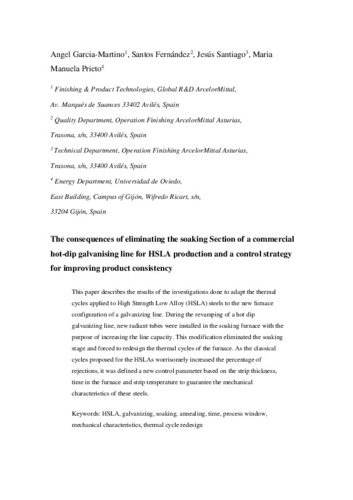The consequences of eliminating the soaking section of a commercial hot-dip galvanising line for HSLA production and a control strategy for improving product consistency
Autor(es) y otros:
Fecha de publicación:
Versión del editor:
Citación:
Resumen:
This paper describes the results of the investigations done to adapt the thermal cycles applied to High Strength Low Alloy (HSLA) steels to the new furnace configuration of a galvanizing line. During the revamping of a hot dip galvanizing line, new radiant tubes were installed in the soaking furnace with the purpose of increasing the line capacity. This modification eliminated the soaking stage and forced to redesign the thermal cycles of the furnace. As the classical cycles proposed for the HSLAs worrisomely increased the percentage of rejections, it was defined a new control parameter based on the strip thickness, time in the furnace and strip temperature to guarantee the mechanical characteristics of these steels.
This paper describes the results of the investigations done to adapt the thermal cycles applied to High Strength Low Alloy (HSLA) steels to the new furnace configuration of a galvanizing line. During the revamping of a hot dip galvanizing line, new radiant tubes were installed in the soaking furnace with the purpose of increasing the line capacity. This modification eliminated the soaking stage and forced to redesign the thermal cycles of the furnace. As the classical cycles proposed for the HSLAs worrisomely increased the percentage of rejections, it was defined a new control parameter based on the strip thickness, time in the furnace and strip temperature to guarantee the mechanical characteristics of these steels.
ISSN:
Ficheros en el ítem




